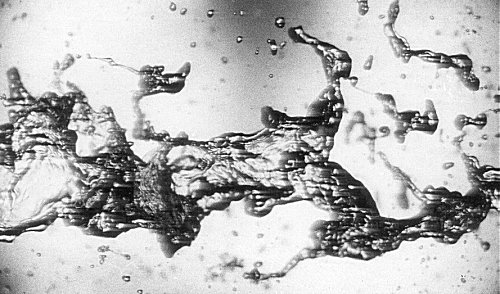Soap Bubbles
Today, we blow bubbles. The University of Houston's College of Engineering presents this series about the machines that make our civilization run, and the people whose ingenuity created them.
If you go to Amazon.com and type in the title Soap Bubbles, you'll be surprised. I just did, and I got eighteen hits. That's because soap bubbles are being used to teach all kinds of things about the science of applied mechanics.
One of these books has been in print for a century. It is Soap Bubbles and the Forces which Mould Them, published in 1902 by the Society for Promoting Christian Knowledge. It's based on three lectures given by Victorian science-writer Charles Vernon Boys.
And this book comes out of something much older. C. V. Boys' lectures were part of a series given for children at the London Institution. They were carrying on a London tradition begun by gentle Michael Faraday, the father of modern electrical science, in 1826. Faraday immersed himself deeply in public science-lectures for children.
Once you turn the pages in Boys' book, you see that it's about more than just soap bubbles. He treats everything connected with surface tension and surface forces in liquids. His examples are a marvel. He explains the distillation process behind wine tears -- that pattern you see when fortified spirits climb up the side of a glass and fall back down, making it appear that the cup is weeping. Boys pulls up an exhortation against strong drink from the Book of Proverbs, which, he believes, describes wine tears. "Look not thou upon the wine when ... it moveth itself aright."
He shows how to make what I used to call a water bomb when I was a kid -- flimsy paper folded into a small origami box that you can fill with water and throw at one another on a hot summer's day. He shows how capillary action either raises or lowers the liquid level in a capillary tube, depending on the contact angle. He shows how to shape soap bubbles into every form imaginable.
I like the one where he floats a sieve in a tub of water. With the right surface characteristics of the sieve wire and the mesh size, surface tension can keep water from entering the holes. Then he quotes from one of Edward Lear's Nonsense Songs:
They went to sea in a sieve, they did,
In a sieve they went to sea:
In spite of all their friends could say,
On a winter's morn, on a stormy day,
In a sieve they went to sea.
See, Boys says--they really could've done it!
There seems no end. Boys speaks of singing water jets, beaded water jets, and beaded spider webs. He calls all of nature into a microcosmic display of surprise and beauty. He makes water leap and dance. Boys himself did everything -- he worked in a coal mine, he served as president of the Physical Society of London.
We fret about education today -- how to use TV and the Internet. Then we read this nineteenth- century teacher, buoyed by the joy of the magic in it all, reminding us that, whatever we do for students, it must well up out of our own fervor, intelligence, and imagination.
I'm John Lienhard, at the University of Houston, where we're interested in the way inventive minds work.
(Theme music)
C. V. Boys, Soap Bubbles and the Forces which Mould Them, Garden City, NY: Doubleday Anchor Books, 1959.
For more on surface tension and the surface layer, see: see: J. H. Lienhard IV and J. H. Lienhard V, A Heat Transfer Textbook, 5th ed., Dover Pubs. Inc., Mineola, NY, 2019. You can easily download the entire book, free of charge, at https://ahtt.mit.edu/ Chapter 9. You may obtain a digital copy of this source free of charge by clicking on the title.

The aerodynamic breakup of a 0.2 inch diameter jet moving at 123 feet per second illustrates the potential complexity of surface-tension-governed phenomena.
(photo by John Lienhard)